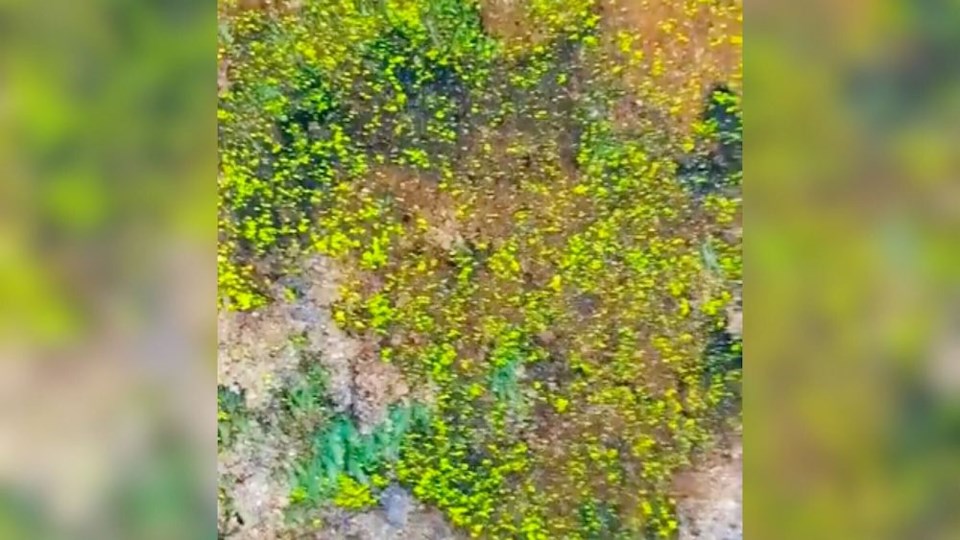Stanley Park houses a multitude of flora and fauna in its vast woods.
From soaring hemlock and cedar trees to miniature mushrooms and petite plants, the park is home to a range of vegetation.
But one resident plant may have you stealing a second glance -- or at least its name will.
Schistostega pennata, known commonly as "goblin's gold moss," grows in dark places where others moss species cannot. In order to do so, the adaptive plant has developed the capacity to store and reflect small amounts of light.
Ariane Comeau, Conservation Projects Manager at the Stanley Park Ecology Society (SPES), tells Vancouver Is Awesome that the eccentrically named moss appears to glow in the dark and is also known as "luminous moss."
While it can't compete with other mosses in more well-lit areas, the "goblin moss" thrives in darker places. The 2010 State of the Park Report for the Ecological Integrity of Stanley Park notes that the "moss‘s golden luminescence is produced by cells present in the early stages of its life cycle (protonemata) that are able to concentrate dim light, thereby allowing the moss to grow in very low light conditions where other plants cannot survive."
Another mysterious marvel of #StanleyPark: Glow-in-the-Dark Goblin Moss 👻
Easily out-competed by other mosses in more well-lit areas, goblin moss developed the capacity to store and reflect small amounts of light so it could grow in darker places where other species cannot. pic.twitter.com/HD5gcAhyGd
— Stanley Park Ecology Society (@StanleyParkEco) May 19, 2021
Goblin's gold moss in Stanley Park
In 2017, over a hundred citizen scientists explored Stanley Park as part of the Canada150 BioBlitz flagship event. The goal was to record as many species in the Park as possible over a two-day period and one of them was the "goblin gold moss."
SPES Development Assistant Michael Murrey writes that goblin moss easily grows on places such as overturned tree roots, near shallow pools of water, or even near the entrance to animal burrows.
And why does it glow green?
"Goblin moss has [specially] shaped cells that are curved on one side helping to reflect [the] light of the green chloroplast cells nearby to create a greenish glow," he adds.
The luminous moss may be found in in China, Japan, Siberia, Europe, and North America.



